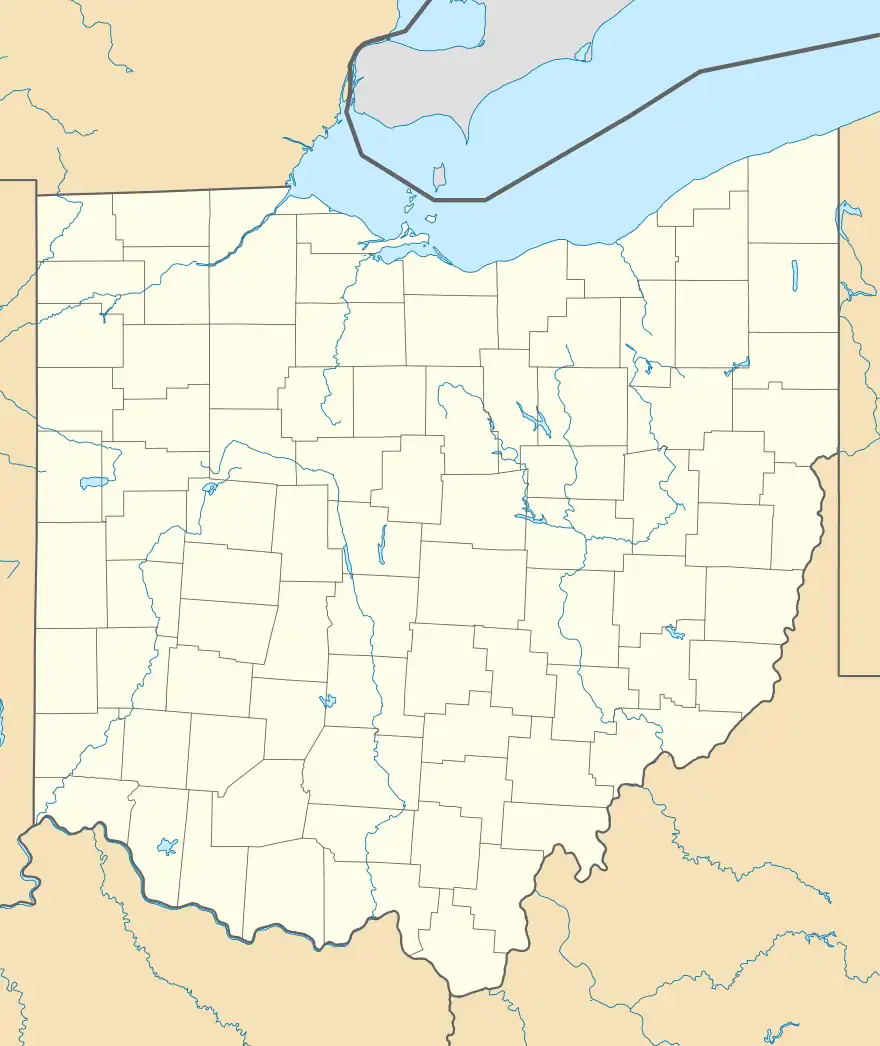Lagonda Club Building
The Lagonda Club Building is a historic clubhouse in downtown Springfield, Ohio, United States. Designed by Frank Mills Andrews,[1] a leading period architect who was responsible for the construction of the Kentucky State Capitol, the clubhouse is a three-story structure with a large basement. Various materials are present on different parts of the exterior — while the foundation and first story are constructed of dressed limestone, the second through fourth floors are built of brick; their only stone elements are stone trim around some of the windows.[2]
Lagonda Club Building | |
 Southern and eastern sides of the building | |
  | |
| Location | Northwestern corner of High (US 40) and Spring Sts., Springfield, Ohio |
|---|---|
| Coordinates | 39°55′23.8″N 83°48′25.456″W |
| Area | less than 1 acre (0.40 ha) |
| Built | 1895 |
| Architect | Frank M. Andrews |
| Architectural style | Late 19th and 20th Century Revivals |
| NRHP reference No. | 75001342[1] |
| Added to NRHP | May 28, 1975 |
Completed in 1895,[1] the Lagonda Club is an early example of Beaux-Arts architecture. This style was favored by Andrews, whose work appears to have been influenced by Louis Sullivan's preferred style.[2] After the Lagonda Club ceased to use the building, it became the headquarters of the local chamber of commerce.[1] Today, the property is again owned by the club (now known as "Club Lagonda"), which seeks to rent most of its space to businesses.[3] Because of its historically significant architecture and its place in Ohio's history, the Lagonda Club Building was listed on the National Register of Historic Places in 1975; at the same intersection is located another landmark, the former Warder Public Library.[1]
References
- "National Register Information System". National Register of Historic Places. National Park Service. March 13, 2009.
- Owen, Lorrie K., ed. Dictionary of Ohio Historic Places. Vol. 2. St. Clair Shores: Somerset, 1999, 129-130.
- The Lagonda Concept, Club Lagonda, n.d. Accessed 2010-01-11.
Further reading
- Prince, Benjamin F. A Standard History of Springfield and Clark County, Ohio: An Authentic Narrative of the Past, With Particular Attention to the Modern Era in the Commercial, Industrial, Educational, Civic and Social Development. Chicago and New York: American Historical Society, 1922.


